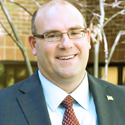Checkout our current blog posts HERE. See you there!
A Bond Market Doomsday – Part 1

 Eye-catching headlines like this are great ratings boosters right now. Phrases like “Surviving financial annihilation” or “Devastating losses” have been en vogue lately because investors are becoming more aware that bonds may not be the pillar of our portfolios as we have come to rely on them over the past 30 years. Yields on bonds have been kept artificially low due to the Federal Reserve’s intervention over the past several years with the Quantitative Easing (QE) programs. However, now that it looks as though the FED will be backing off of their QE programs, since it looks like the economy will be able to stand on its own two legs, we are left with a bond market with yields at nearly all-time lows.
Eye-catching headlines like this are great ratings boosters right now. Phrases like “Surviving financial annihilation” or “Devastating losses” have been en vogue lately because investors are becoming more aware that bonds may not be the pillar of our portfolios as we have come to rely on them over the past 30 years. Yields on bonds have been kept artificially low due to the Federal Reserve’s intervention over the past several years with the Quantitative Easing (QE) programs. However, now that it looks as though the FED will be backing off of their QE programs, since it looks like the economy will be able to stand on its own two legs, we are left with a bond market with yields at nearly all-time lows.
Does this mean that the bond bear is finally out of hibernation?
The chart below gives us a history lesson on the last time we headed into a bond bear market (early 1950’s). Rates on the 10-Year U.S. Treasury bond were at similar levels to where they are today.

From what we have seen already this year, it does seem that rates have nowhere to go but up. According to the above chart, it will be important to temper our return expectations coming from this bond portion of a portfolio. The average return we have come to expect from bonds will likely be drastically reduced going forward. If expectations are properly tempered, this need not “annihilate” our portfolios going forward. In my next blog I will go into more detail of what a bond bear market has looked like in the past.
Angela Palacios, CFP®is the Portfolio Manager at Center for Financial Planning, Inc. Angela specializes in Investment and Macro economic research. She is a frequent contributor to Money Centered as well asinvestment updates at The Center.
The information contained in this report does not purport to be a complete description of the securities, markets or developments referred to in this material. The information has been obtained from sources considered to be reliable, but we do not guarantee that the foregoing material is accurate or complete. The information is not a complete summary or statement of all available data necessary for making an investment decision and does not constitute a recommendation. Any opinions are those of Center for Financial Planning, Inc., and not necessarily of RJFS or Raymond James. Expressions of opinion are as of this date and are subject to change without notice. There is an inverse relationship between interest rate movements and bond prices. Generally, when interest rates rise, bond prices fall and when interest rates fall, bond prices generally rise.
Medicare open enrollment begins October 15th

 Medicare’s open enrollment season is upon us. That means from now until December 7, you are able to make changes to your Medicare Advantage and prescription drug coverage. If you’re happy with your coverage, you don’t have to do anything. But this could be a good opportunity to make adjustments based on changes in your situation and changes to Medicare.
Medicare’s open enrollment season is upon us. That means from now until December 7, you are able to make changes to your Medicare Advantage and prescription drug coverage. If you’re happy with your coverage, you don’t have to do anything. But this could be a good opportunity to make adjustments based on changes in your situation and changes to Medicare.
It pays to take the time to compare plans and shop around. While many plans have maintained or decreased their premiums, more than 450 plans are expected to increase premiums for 2014. You can also expect continued discounts on prescription drugs as part of the Affordable Care Act’s plan to gradually close the Part D coverage or “doughnut hole”.
Even if you’re satisfied, open enrollment presents a great opportunity to make sure you’re getting the most out of Medicare.
Here are some tips to help you get started.
- Ask yourself some important questions. Have your needs changed? Is your current coverage adequate? Will the cost of your current plan be going up? Are there comparable, lower-cost plans available?
- Review the annual notice of change from your current plan provider. You should have received this in September.
- Compare plans using medicare.gov’s Medicare Plan Finder.
- Call the Medicare Rights Center at 800.333.4114 for free counseling.
Medicare decisions can be complicated. If you have any questions about open enrollment, or if you’d like to discuss how healthcare costs factor into your overall financial plan, please contact your Center planner.
Who are the Quality Financial Planners?

 October is Financial Planning Month and Center Partner Tim Wyman takes this opportunity to bring us back to the basics. In this blog 5-part series he clarifies some general questions about financial planning and the financial planning process.
October is Financial Planning Month and Center Partner Tim Wyman takes this opportunity to bring us back to the basics. In this blog 5-part series he clarifies some general questions about financial planning and the financial planning process.
There are many individuals and companies in the financial services industry to choose from based on your specific needs. There are large firms in addition to wire house firms.
Determining who the “best” is challenging and you should be sure to interview a couple to determine a good fit. Do they work with others like you? Are they experienced in working with similar issues as yours? Are you comfortable with their costs?
Ultimately a financial planning relationship is a personal relationship. Regardless of what firm you choose to work with, it is critical that you feel a high degree of confidence in trust with the INDIVIDUALS that you will be working with to accomplish your objectives.
Timothy Wyman, CFP®, JD is the Managing Partner and Financial Planner at Center for Financial Planning, Inc. and is a frequent contributor to national media including appearances on Good Morning America Weekend Edition and WDIV Channel 4 News and published articles including Forbes and The Wall Street Journal. A leader in his profession, Tim served on the National Board of Directors for the 28,000 member Financial Planning Association™ (FPA®), trained and mentored hundreds of CFP® practitioners and is a frequent speaker to organizations and businesses on various financial planning topics.
Any opinions are those of Center for Financial Planning, Inc., and not necessarily those of RJFS or Raymond James. Every investor’s situation is unique and you should consider your investment goals, risk tolerance and time horizon before making any investment. Clients should evaluate if an asset-based fee is appropriate in servicing their needs. A list of additional considerations, as well as the fee schedule, is available in the firm’s Form ADV Part II as well as in the client agreement.
Center supports Gleaners Food Bank as a Presenting Sponsor at Vine & Dine

 As a presenting sponsor, The Center proudly supported our local community and Gleaner’s Community Food Bank of Southeastern Michigan. The 10th Annual Vine & Dine, hosted by the Birmingham Bloomfield Chamber of Commerce, is best described as a strolling food, wine and fashion event. “What a wonderful excuse for an out-of-the-ordinary evening,” said attendee and Center Partner Melissa Joy. “It was such a pleasure to support Gleaner’s in such a unique way.”
As a presenting sponsor, The Center proudly supported our local community and Gleaner’s Community Food Bank of Southeastern Michigan. The 10th Annual Vine & Dine, hosted by the Birmingham Bloomfield Chamber of Commerce, is best described as a strolling food, wine and fashion event. “What a wonderful excuse for an out-of-the-ordinary evening,” said attendee and Center Partner Melissa Joy. “It was such a pleasure to support Gleaner’s in such a unique way.”
Over the years, The Center has shared a strong partnership with the chamber through volunteerism or sponsorship. This year's event was held Wednesday September 25th at Neiman Marcus at The Somerset Collection. The event featured a fall runway fashion show and more than 400 guests were in attendance.
Gleaners Community Food Bank provides surplus donated and low cost food and related personal care products to people in need in southeastern Michigan. For more information about Gleaner's Community Food Bank of Southeastern Michigan, please visit their website at: www.gcfb.org
Your Financial Plan: How to Prepare & How Much Does it Cost?

 October is Financial Planning Month and Center Partner Tim Wyman takes this opportunity to bring us back to the basics. In this blog 5-part series he clarifies some general questions about financial planning and the financial planning process.
October is Financial Planning Month and Center Partner Tim Wyman takes this opportunity to bring us back to the basics. In this blog 5-part series he clarifies some general questions about financial planning and the financial planning process.
A financial plan can be prepared on your own or with the assistance of a professional. If you choose to work with a professional, a Certified Financial Planner™ practitioner is suggested since they are trained to provide a comprehensive review. Regardless, if you choose to do it on your own or work with a professional, there are common steps.
6 most common steps in the process:
- Gather Personal and Financial Data
- Establish Goals
- Process & Analyze Information
- Develop Comprehensive Plan
- Implement the Plan
- Monitor the Plan
The cost of a financial plan will vary depending upon the experience of the professional you work with and the complexity of your situation. In many cases, the fee may range from $500 to several thousand dollars – again based on the complexity.
In the final blog of this 5-part series, we’ll look at who the best financial planners are.
Timothy Wyman, CFP®, JD is the Managing Partner and Financial Planner at Center for Financial Planning, Inc. and is a frequent contributor to national media including appearances on Good Morning America Weekend Edition and WDIV Channel 4 News and published articles including Forbes and The Wall Street Journal. A leader in his profession, Tim served on the National Board of Directors for the 28,000 member Financial Planning Association™ (FPA®), trained and mentored hundreds of CFP® practitioners and is a frequent speaker to organizations and businesses on various financial planning topics.
Any opinions are those of Center for Financial Planning, Inc., and not necessarily those of RJFS or Raymond James. Every investor’s situation is unique and you should consider your investment goals, risk tolerance and time horizon before making any investment. Clients should evaluate if an asset-based fee is appropriate in servicing their needs. A list of additional considerations, as well as the fee schedule, is available in the firm’s Form ADV Part II as well as in the client agreement.
Investment Performance - 3rd Quarter 2013
Source: Morningstar
US Bonds represented by Barclay's US Aggregate Bond Index a market-weighted index of US bonds. US stocks per S&P 500 Index a market-cap weighted index of large company stocks. Barclay’s Capital Global Bond index is a market-cap weighted index of global bonds. US Small Companies per Russell 2000 Index a market-cap weighted index of smaller company stocks. International stocks measured by MSCI EAFE is a stock market index designed to measure the equity market performance of developed markets outside of the US and Canada. Commodities per Morgan Stanley Commodity Index a broadly diversified index designed to track commodity futures contracts on physical commodities. Barclays Capital US Corporate High Yield Index is an unmanaged index that covers the universe of fixed-rate, noninvestment-grade debt. Barclays Capital US Corporate High Yield Index is an unmanaged indexthat covers the universe of fixed-rate, noninvestment-grade debt.
Inclusion of these indexes is for illustrative purposes only. Keep in mind that individuals cannot invest directly in any index, and index performance does not include transaction costs or other fees, which will affect actual investment performance. Individual investor’s results will vary. Past performance does not guarantee future results.
Planners' Perspective: Finding home after 8 years

 Part 5 of a series that will shed some light on who we are and why we love financial planning. From an integral visionary teacher to an 8 year journey to the Center, Tim Wyman tells us how he found his calling and his calling finally found a home.
Part 5 of a series that will shed some light on who we are and why we love financial planning. From an integral visionary teacher to an 8 year journey to the Center, Tim Wyman tells us how he found his calling and his calling finally found a home.
Ever since my junior year at Albion College I knew that I was meant to be in personal finance. I found my way to Albion to play football – or at least that’s what I thought at age 17. Four years later I came away with a passion for personal finance. A young professor, Jon Hooks, played an important role in my academic interests. It’s fair to say that he saw something I didn’t at first. We all need a coach/mentor/cheerleader and I owe him a great deal of gratitude.
As much as I’d like to say my path to the Center was a straight line filled with success – it wasn’t. Early in my career I had stints with an insurance company and a few brokerage firms before striking out on my own; hanging out my shingle for a number of years. This was also the time that I decided to attend Law School and begin a family.
In 1999 I was introduced to the partners at The Center. From my first encounter, I knew it was the place I had been looking for the last 8 years. Dan Boyce, Marilyn Gunther, and Estelle Wade were not only some of the finest financial planners I ever met; they were some of the best human beings I had met. Our values of family, doing what’s in the best interest of clients at all times, passion for financial planning, and building a long-lasting firm to serve clients and staff was evident from day one. My calling found a home.
After 14 years here at the Center, my passion burns as strong as ever. Helping clients make sense of all of the options to meet their personal objectives fuels the fire. Along with current partners Matt Chope and Melissa Joy, I am excited to continue to build on the Center’s strong 28-year foundation for many years to come.
A Financial Plan: What is it & Who needs one?

 October is Financial Planning Month and Center Partner Tim Wyman takes this opportunity to bring us back to the basics. In this blog 5-part series he clarifies some general questions about financial planning and the financial planning process.
October is Financial Planning Month and Center Partner Tim Wyman takes this opportunity to bring us back to the basics. In this blog 5-part series he clarifies some general questions about financial planning and the financial planning process.
I must admit, I cringe a bit when hearing the question, “What is a financial plan?” That’s because of my firm belief that the focus should be on the “ing” in planning. However, a financial plan, done correctly, is a comprehensive road map designed to assist in achieving whatever goals are important to you.
A financial plan should include analysis and recommendations in areas such as:
- Cash management and financial statements
- A review of risk management needs
- Analysis as to needed retirement savings goals
- A plan to reduce income tax liability
- A comprehensive investment plan
- Coordination of estate goals
Most importantly, a financial plan should be an ongoing guide and not a leather binder placed on the shelf to collect dust! A financial plan can be used to align financial strategies and decisions as life events occur.
Do I need a financial plan?
Who needs a financial plan? Financial planning provides a method or structure to help you achieve your life’s goals, no matter how wealthy (or unwealthy) you are. Whether you work with a Certified Financial Planner™ practitioner or do it on your own, the financial planning process can be the catalyst in making good decisions and achieving your financial goals.
In the 4th blog of this 5-part series, we’ll look at how to prepare a financial plan and how much it might cost you.
Timothy Wyman, CFP®, JD is the Managing Partner and Financial Planner at Center for Financial Planning, Inc. and is a frequent contributor to national media including appearances on Good Morning America Weekend Edition and WDIV Channel 4 News and published articles including Forbes and The Wall Street Journal. A leader in his profession, Tim served on the National Board of Directors for the 28,000 member Financial Planning Association™ (FPA®), trained and mentored hundreds of CFP® practitioners and is a frequent speaker to organizations and businesses on various financial planning topics.
Any opinions are those of Center for Financial Planning, Inc., and not necessarily those of RJFS or Raymond James. Every investor’s situation is unique and you should consider your investment goals, risk tolerance and time horizon before making any investment. Clients should evaluate if an asset-based fee is appropriate in servicing their needs. A list of additional considerations, as well as the fee schedule, is available in the firm’s Form ADV Part II as well as in the client agreement.
My Alzheimers Association Experience

 This summer, I had a wonderful opportunity to get an insider’s view of the Alzheimer’s Association. I spent over 120 volunteer hours at the Greater Michigan Chapter of the Association as part of my master’s certificate program in Gerontology, and it was time well spent.
This summer, I had a wonderful opportunity to get an insider’s view of the Alzheimer’s Association. I spent over 120 volunteer hours at the Greater Michigan Chapter of the Association as part of my master’s certificate program in Gerontology, and it was time well spent.
My goal during my volunteer time was to get a well-rounded view of the Alzheimer’s Association and the services and resources it provides to families facing an Alzheimer’s or dementia diagnosis. I spent about half of my time answering calls on the Association’s Helpline, which provides support, education and referral services to callers. I spent another large part of my time in the Sakwa Day Program, a respite program for individuals diagnosed with dementia or Alzheimer’s. It provides a safe, activity-oriented experience for people with dementia while their care providers work, run errands, or just get a break. I was also able to participate in community education programs and observe support groups during my volunteer time.
My experience at the Alzheimer’s Association gave me a greater base of knowledge with which to help Center clients, and others, going forward. Even more valuable, I feel that I have a better understanding of what families are facing with a dementia diagnosis. I know that we are very lucky to have an Association in our neighborhood that provides a wide range of services and resources, with a staff that has a passion for what they do – a passion that radiates to others, including me.
For more information on the local Alzheimer’s Association, services and programs, call 1-800-272-3900 or visit the website at www.alz.org/gmc.

